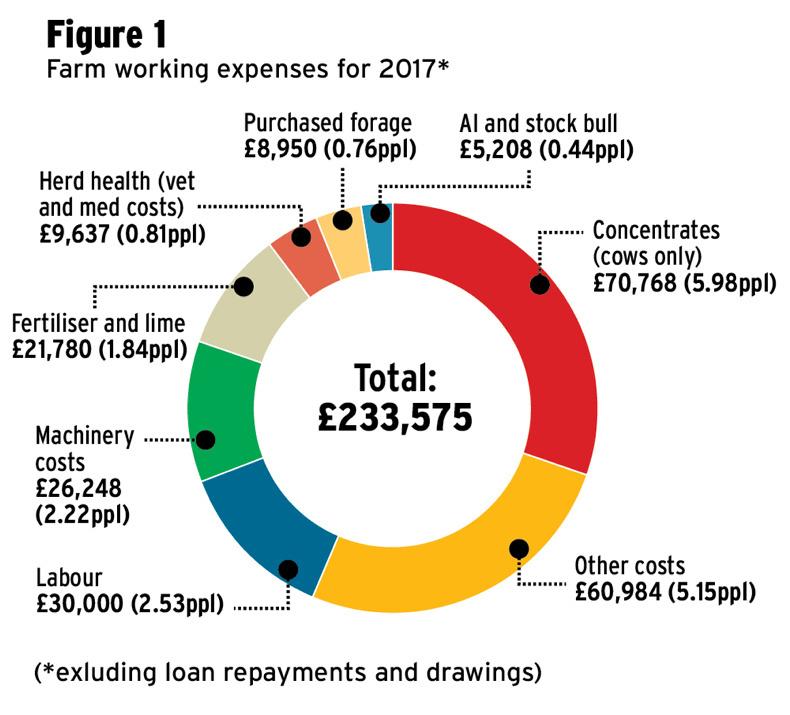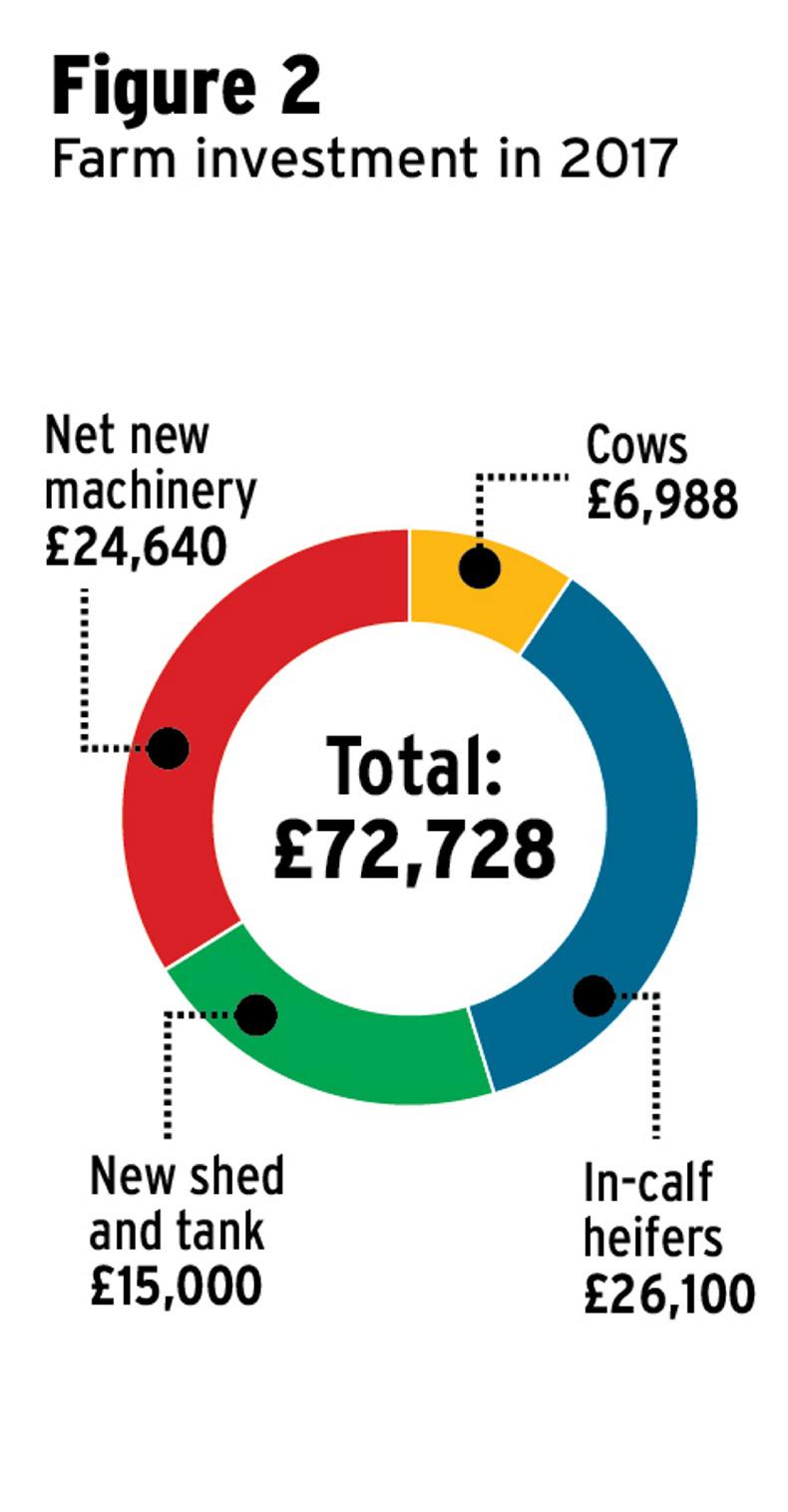Significant investments were made on Robin Clements’ farm near Trillick, Co Tyrone, in 2017 as farm income rose on the back of increased milk prices, cow numbers and yield.
Average milk price in 2017 was up 7.82p/l year-on-year to 29.94p/l, average cow numbers were up by 11 to 167 and yield rose by 5.5% to 7,087 litres/cow. Income from milk sales stood at £340,431 last year, up £113,681 from 2016 levels.
As Figure 1 shows, concentrates remain the largest working expense on Robin’s farm at almost 6p/l. Tight fodder supplies, coupled with improved milk prices, led Robin to increase concentrate levels this winter with an extra 1.5kg/cow/day fed from October.

Total concentrates fed in 2017 was up 10.0% to 1,972kg/cow/year, equating to a feed rate of 0.28kg/litre. Fodder purchased to the value of £8,950 was an additional cost incurred to stretch silage supplies.
Across the six Dairylink Ireland farms, Robin has the highest machinery costs at £26,248. However, it should be noted that this includes all fuel and maintenance costs associated with his agri-contracting enterprise. He also uses a zero grazer to keep grass in cows’ diets by utilising grass from an outfarm as the grazing platform is limited on the home farm. Labour costs of £30,000 include wages for Robin’s two sons who work on the farm.
Capital expenditure
As Figure 2 outlines, Robin invested significantly in the farm business last year with cows and in calf heifers purchased to increase overall cow numbers and replace cows that were sold off or culled to tighten the calving profile.

A new tank and shed for young stock was constructed on an outfarm and machinery was also purchased. There was no additional borrowing or loan restructuring last year and capital expenditure totalling £72,728 was paid for from cashflow.
Robin continued to invest in soil fertility last year with chemical fertilisers used in 2017 totalling 202kg/ha for nitrogen, 28kg/ha phosphorous and 53kg/ha potash. Costs of reseeding carried out last year are included in the farm working expenses. This all led to a significant rise in grass growth last year with 11tDM/ha grown on the farm, representing a 14.6% rise year on year.
Overall, total receipts from milk sales, stock sales and contracting, but not including CAP payments, stood at £407,630 last year.
Farm working expenses totalled £233,575, capital expenditure was £72,728 and drawings of £30,000 are assumed across all project farms.
This means there was £71,327 available in 2017 for loan repayments, taxation and additional drawings.
There was a lot of expenditure on the farm last year following improved milk sales, but the investments that were made should benefit farm profitability into the future. The focus going forward is to lower working expenses and production costs. Last year, cost of production, excluding drawings and the capital expenditure paid for from cashflow, stood at 25.9ppl.
Purchased fodder and increased concentrate feeding were costs last year that mainly stemmed from tight fodder supplies. Wet weather in late summer and autumn and a smaller silage crop from the outfarm following a reseed of 68 acres in May meant pressure was put on both the supply of and demand for winter feed.
We are happy that our current stocking rate is sustainable for the farm as the outfarm should produce more grass next year after the reseed and steps to address soil fertility.
The cost of buying in cows and in-calf heifers will not occur in 2018 as there are 47 replacement heifers coming forward. Although cow numbers increased, stocking rate moved back slightly last year as we rented an extra 20 acres. Taking more ground or using a contract heifer rearer are potential options for the future to increase milk output.
We appreciate that zero-grazing is not the cheapest way to utilise grass, but it is a system that works for us at present. Ideally, we would like to build a second parlour on the 160-acre outfarm to graze grass instead of zero-grazing. However, with borrowings still being paid off for recent expansion and adequate cow accommodation on the home farm at present, developing a second unit is further down the line.
The agri-contracting enterprise provides an additional source of income and we have the labour requirement for it at present with my two sons at home, although labour could be the limiting factor as the dairy enterprise grows. Contracting also allows us to do our own silage and slurry work when the opportunities arise.






 This is a subscriber-only article
This is a subscriber-only article













SHARING OPTIONS: